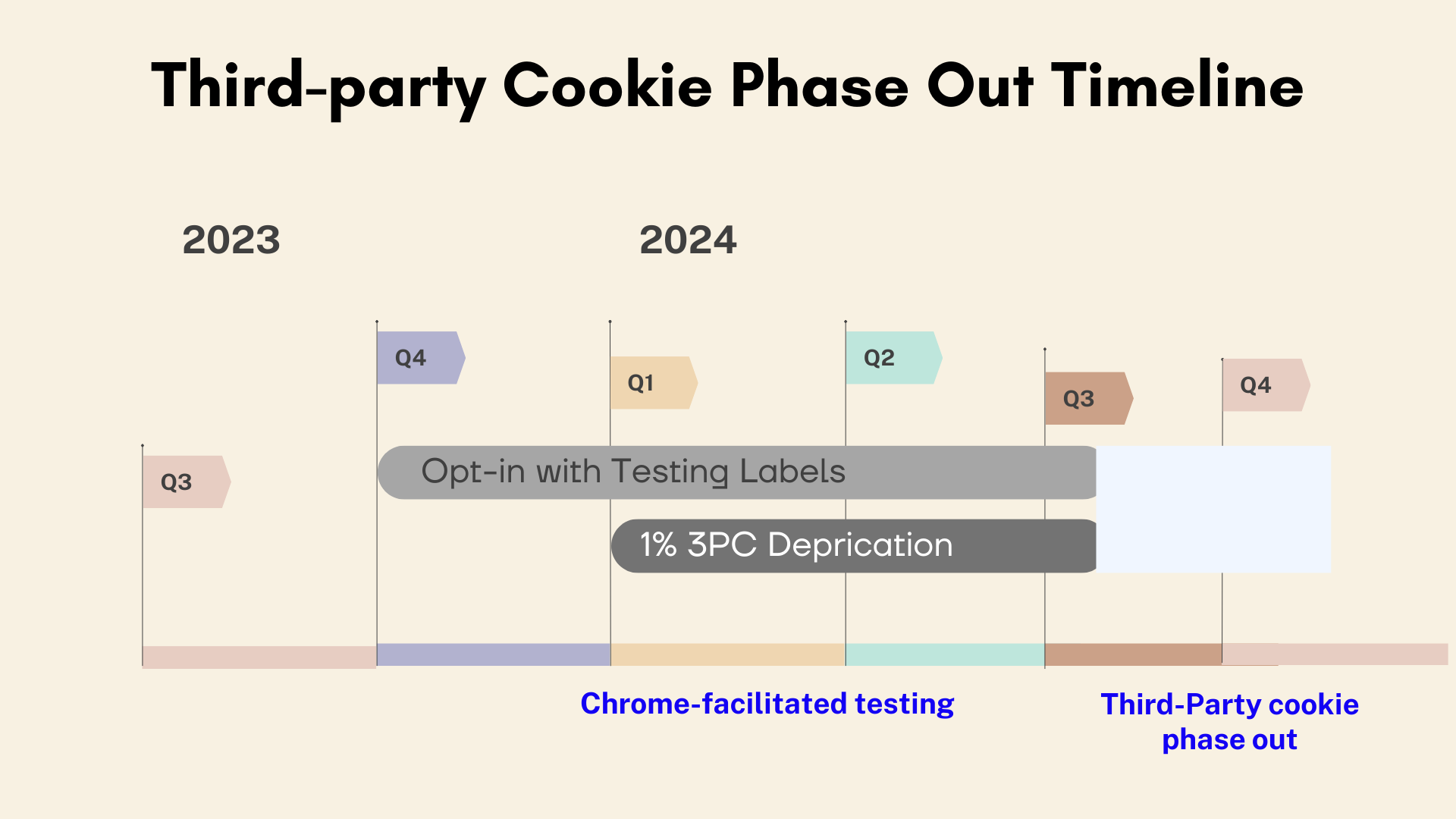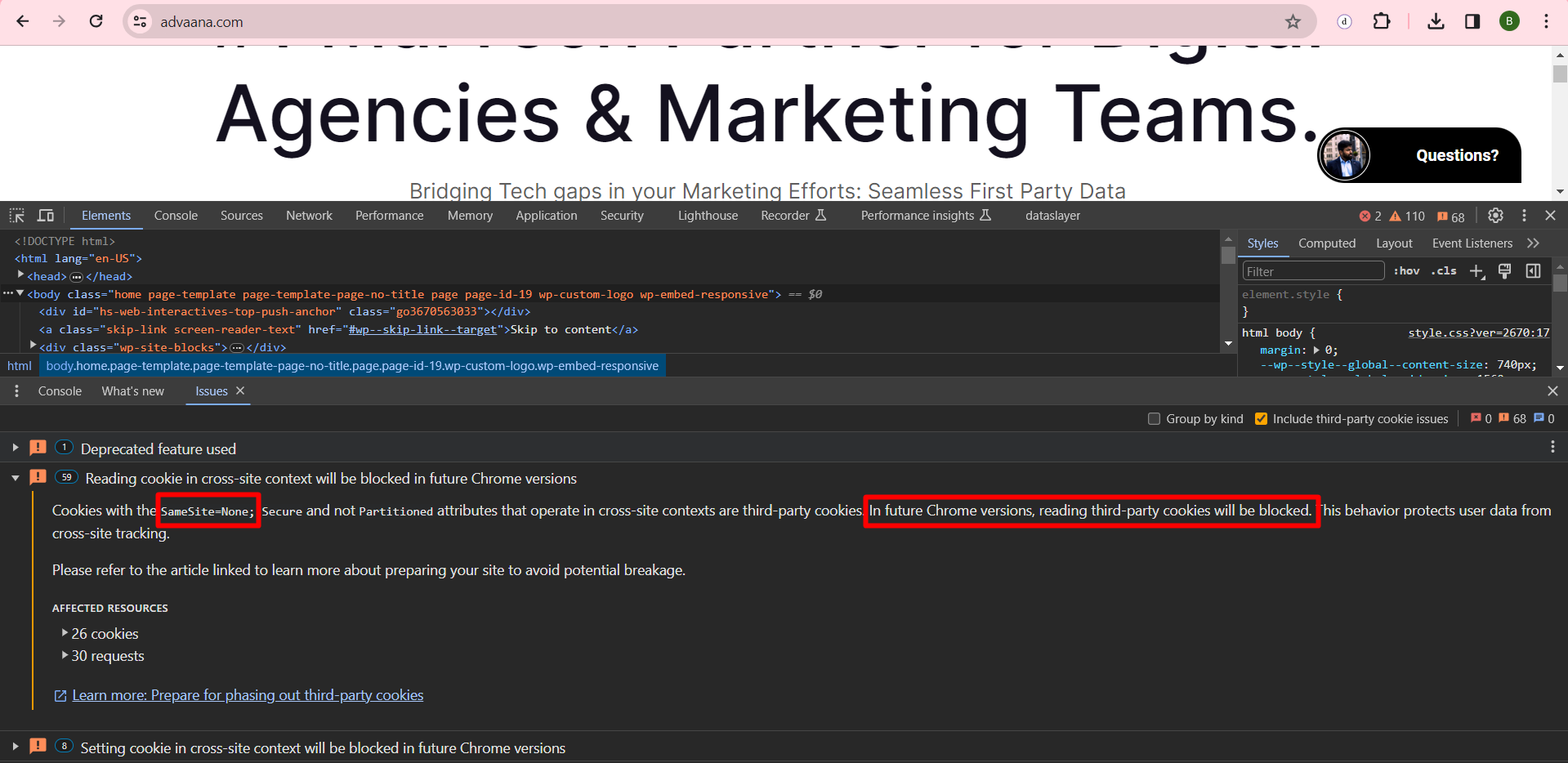People are getting more worried about their privacy online, especially because websites keep track of them using cookies. In response to these concerns, Google Chrome is making a big change: it’s getting rid of third-party cookie phaseout completely. This will have a big impact on advertisers and website owners who rely on these cookies. This article will give you the information regarding the Google chrome’s bold move to phasing out the third-party cookie.
Key Takeaways
- Understand the third-party cookie phaseout
- 1% of Chrome users face cookie test: is your site ready?
- Audit your cookies, test for breakage, and explore alternatives. Prepare your site
- Embrace the Future: Privacy Sandbox Offers Cookie-Free Solutions!
Understand the third-party cookie phaseout
What are third-party cookies?
- Small pieces of data placed on your browser by websites other than the one you’re currently visiting.
- Mainly used for tracking your online activity across different websites, enabling targeted advertising and personalized experiences.
Heads up! Google Chrome is blocking third-party cookies for good, starting with a small test group now and phasing out for everyone by the end of the year (Q3 2024).
Why the change?
Third-party cookie phaseout track you across the web, raising privacy concerns. Google’s “Privacy Sandbox” aims to create a solution that both respects privacy and keeps the internet free and accessible
1% of Chrome users face cookie test: is your site ready?
Get ready for a privacy shakeup! Google Chrome has begun third-party cookie phaseout for 1% of its users to test the waters before a complete phase-out planned for late 2024.
What does this mean for you?
- If your website relies on third-party cookies, it’s time to take action.
- This 1% test group allows you to see how your site might function without these cookies.
- You can use Chrome DevTools or the Privacy Sandbox Analysis Tool to check your cookie usage.
- Google recommends using the browser flag “test-third-party-cookie-phaseout” to simulate the impact on your site.

What are the alternatives?
- Google’s Privacy Sandbox initiative offers Privacy Sandbox APIs as replacements that respect user privacy.
Audit your cookies, test for breakage, and explore alternatives. Prepare your site
Steps to Prepare Your Website for the Third-Party Cookie Phaseout:
Google Chrome is, moving to third-party cookie phaseout by the end of 2024, raising an eyebrow for website owners who rely on them. But fear not! Here’s your roadmap to a smooth transition:
1. Cookie Checkup:
Look for “SameSite=None” in your code, especially if you added it around 2020. This helps you identify third-party cookies phaseout affected by Chrome’s.
Use of Chrome DevTools:
This ChromeDevTools Network Panel shows you the request which have been set and sent requests.
Steps to see the chrome devtools
Step 1: Open your website.

Step 2: Right click on your website and click on Inspect.

Step 3: Now, you will see the dock window having a lots of option into it. If you see the “Issues” then click on it. If you don’t able to see it then click on three dots and select the “Issues” option.


Chrome warns you directly! Check the DevTools Issues tab for “Cookie sent in cross-site context” alert. This highlights cookies affected by the upcoming phase-out, helping you prepare your website early.
Privacy Sandbox Analysis Tool (PSAT)
The Privacy Sandbox Analysis Tool (PSAT), is an free Chrome extension. This tool is provided by the Chrome from which we can analyze cookie usage and provides debugging options for both cookies and privacy Sandbox features.
You can able to download this extension from the Chrome Web Store. Pin this extension to your website.
By this tool, you can able to see the third-party cookie and you can able to check with those providers to see if they have plans for the third-party cookie phaseout.
2. Test Your Site for Cookie-less
- Head to chrome://settings/cookies and block third-party cookie phaseout. See if your site breaks. It’s a good starting point, but not a foolproof fix.
Embrace the Future: Privacy Sandbox Offers Cookie-Free Solutions!
The Privacy Sandbox offers tools for your website’s future:
- Sign in securely without cookies: Federated Credential Management lets users log in easily across sites, protecting their privacy.
- Fight fraud, not users: Private State Tokens help combat fraud and spam without revealing personal information.
- Personalize ads without tracking: Topics enables relevant advertising and content based on interests, all while respecting privacy.
- Reach the right audience: Protected Audience helps with targeted marketing campaigns without compromising users’ data.
- Track your ad performance: Attribution Reporting provides insights into ad effectiveness, ensuring transparency and accountability.
Conclusion
In conclusion, Chrome’s bold move to third-party cookie phaseout is a significant step towards protecting user privacy. By limiting the ability of advertisers and trackers to collect personal data without explicit consent, Chrome is putting the control back in the hands of the users. With this change, users can expect a more private and secure browsing experience, where their personal information is not exploited for targeted advertising. The future of online privacy looks promising, thanks to Chrome’s commitment to user-centric privacy measures.









Leave a Reply